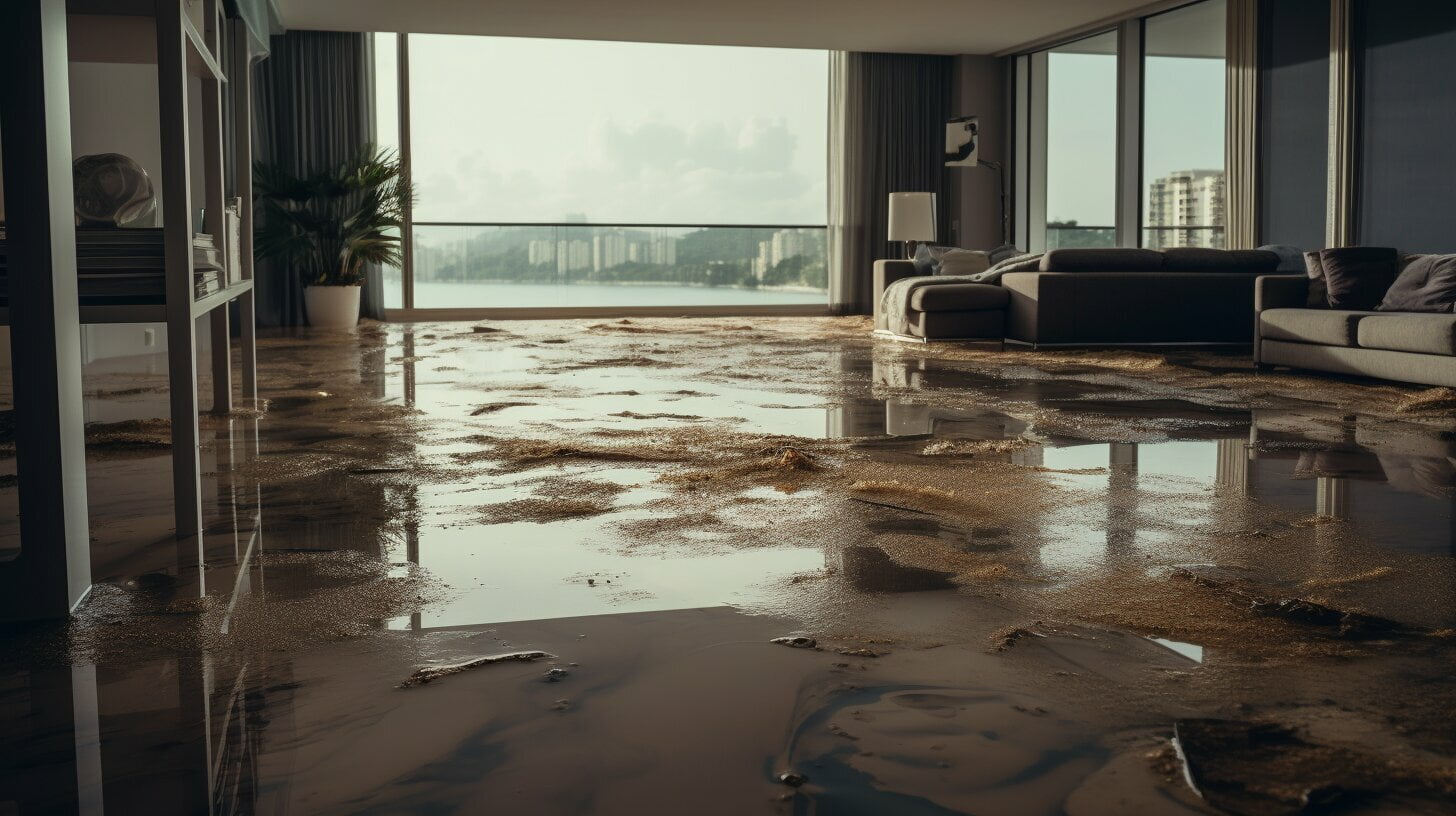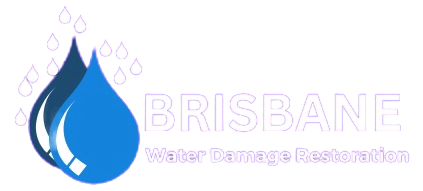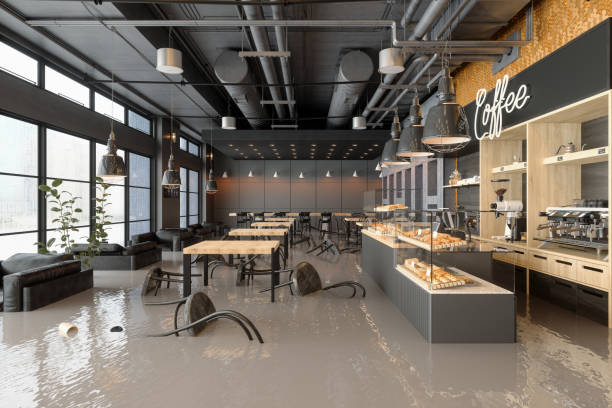Water damage in a commercial property in Brisbane or Australia can cause big problems. It can stop business, harm important parts of the building, and lead to long-term damage. Fixing water damage needs a detailed plan to reduce downtime, prevent more harm, and get the property back to normal.
This guide shows the key steps for fixing commercial water damage. It helps business owners and facility managers handle the restoration process well.
Key Takeaways
- Understand the different classifications of water damage and their impact on commercial properties.
- Develop an emergency response protocol to ensure prompt and effective action in the event of water damage.
- Collaborate with professional restoration services to assess the scope of damage and document the restoration process for insurance purposes.
- Utilize advanced drying technologies and moisture monitoring protocols to prevent secondary damage and mold growth.
- Prioritize the restoration and reconstruction of commercial spaces to minimize business disruption and ensure a swift return to normal operations.

Understanding Commercial Water Damage and Its Impact on Business Operations
Water damage in commercial buildings can really disrupt daily operations. It’s important to know the different types of water damage, where it comes from, and how it affects businesses. This knowledge helps owners and managers to quickly respond and reduce disruptions.
Types of Water Damage Classifications
Commercial water damage is divided into three main types:
- Class 1 – This is when only a small part of a room gets wet. The damage is minor, and drying it is easy.
- Class 2 – Here, water gets into a whole room. It can soak into walls or floors, making drying harder.
- Class 3 – This is the worst case. Ceilings, walls, and floors are all soaked. Quick and intense drying is needed to stop further damage.
Common Sources of Commercial Water Damage
Commercial buildings can get water damage from many sources. These include:
- Plumbing failures like burst pipes or broken appliances
- Roof leaks from damaged or poorly sealed roofs
- Natural disasters like heavy rain or floods
- Fire suppression system problems
- Groundwater getting in, like from high water tables or bad drainage
Initial Business Impact Assessment
Doing a detailed initial assessment is key. It helps understand how much commercial building restoration is needed and the business impact. This assessment looks at:
| Factor | Description |
|---|---|
| Affected Areas | The size and location of the property damage in the commercial space |
| Business Operations | The disruption to daily work, including any need to move or close temporarily |
| Financial Implications | The costs for fixing, lost income, and insurance coverage |
Knowing about water damage categories, common causes, and initial impact helps owners and managers. They can make smart decisions and plan an effective restoration strategy.
Emergency Response Protocol for Water-Damaged Properties
When a commercial property in Brisbane gets water damage, acting fast is key. This helps prevent more damage and gets your business back to normal. The first hours after a water problem are critical to protect your property and keep everyone safe.
Here’s a step-by-step guide to handle water damage in commercial properties:
- Quickly check the water damage response and how bad it is. Find out where the water is coming from and try to stop it if you can.
- Focus on emergency procedures and keeping everyone safe. Move people out of the affected area and keep them away until it’s safe.
- Call your insurance and a trusted commercial property protection expert to start fixing things. Time is very important here.
- Take detailed photos and notes of the damage. This will help with insurance claims and fixing the property later.
- Put in place temporary fixes to stop more water damage. This might include covering holes or changing water flow.
- Work with the restoration team to get a rapid response. This helps reduce damage and stops mold from growing.
By following this water damage response plan, you can protect your property. You’ll also keep your assets safe and reduce business disruptions after a water problem.
Professional Assessment and Documentation Procedures
When dealing with commercial water damage, a thorough assessment and documentation are key. This ensures that the damage assessment, insurance claims, and cost estimation are done well by professional restoration services.
Damage Scope Evaluation
The first step is to check the scope and extent of the water damage. Technicians inspect the affected areas, find the root causes, and see how much damage there is. They use special tools to measure moisture, find hidden water, and check the property’s condition.
Insurance Documentation Requirements
Good documentation is vital for insurance claims. The team takes detailed photos and videos of the damage. This helps the insurance company understand the situation and process the claim quickly.
Commercial Water Damage Restoration: Essential Equipment and Techniques
Dealing with water damage in commercial buildings requires the right tools and methods. In Brisbane, experts in Commercial water damage restoration utilize a wide range of equipment and techniques to address the issue effectively. They work quickly to minimize water damage and prevent mould growth.
Industrial-grade water extraction tools are essential in this process, efficiently removing water to ensure the area is thoroughly dried. Next, dehumidification systems manage moisture levels, helping to maintain a safe building environment and clean air quality. Key tools include:
- Portable flood extraction units
- Commercial-grade dehumidifiers
- High-powered air movers
- Moisture meters and thermal imaging cameras
Additionally, experts apply specialized drying techniques for water damage restoration. This includes using air movers and dehumidifiers to dry visible areas while locating and addressing hidden moisture spots to ensure a complete restoration.
Water Extraction and Structural Drying Methods
Effective water extraction and structural drying are key steps in fixing commercial water damage. Experts use top-notch drying tech to get rid of moisture and get the property ready for rebuilding.
Advanced Drying Technologies
Today’s water damage fixing uses the latest drying tools and methods. This includes powerful dehumidifiers, air movers, and drying chambers. They work together to pull out water and dry out building materials.
Moisture Monitoring Protocols
- Regularly check moisture levels with special meters and sensors to see if drying is going well
- Use a detailed moisture map to track drying across the property
- Change drying tools and methods if needed to tackle any leftover moisture
Timeline Management
Quick water extraction and structural drying help reduce downtime and keep the restoration timeline on schedule. Restoration pros work with owners and insurance to make a detailed plan and timeline. This ensures the moisture control phase is done on time.
By using the latest drying tech, checking moisture levels, and managing time well, experts can tackle water extraction issues. They get the property ready for rebuilding.
Preventing Secondary Damage and Mold Growth in Brisbane Commercial Buildings
After water damage, it’s key to protect commercial buildings from mold and secondary damage. Brisbane’s humid weather makes mold a big risk. To keep properties safe and healthy, businesses need to focus on mold prevention and humidity control.
Ventilation is vital for commercial building restoration. Good airflow helps dry out damaged areas and stops mold. Adding dehumidifiers helps keep humidity low, which stops mold from growing.
- Use high-efficiency dehumidifiers to keep humidity between 30-50%.
- Set up air circulation with fans and adjust HVAC systems.
- Check moisture levels and watch for secondary damage signs often.
Keeping a close eye on mold prevention and humidity control is key. This protects Brisbane’s commercial buildings from lasting damage. By tackling these issues early, businesses can save their assets, keep operations running, and make a safer space for everyone.
Restoration and Reconstruction of Commercial Spaces
When water damage hits commercial properties in Brisbane, quick action is key. This part talks about fixing building materials and interior finishes. It shows how to keep businesses running smoothly during repairs.
Building Material Restoration
Fixing water-damaged building materials needs careful work. Commercial reconstruction experts check the damage and use special methods to fix it. They dry out walls, floors, and ceilings. They also clean and fix building materials like drywall, wood, and concrete.
Interior Finishing Recovery
Fixing the inside of a commercial space is also vital for business continuity. This includes replacing carpets, tiles, and other flooring. It also means fixing or replacing damaged cabinets, countertops, and fixtures. This way, businesses can quickly get back to normal and welcome customers.
Keeping operations running smoothly is a big goal during repairs. Teams work fast to keep things moving. They keep everyone informed and find ways to keep businesses open for their clients.
Conclusion
Restoring commercial properties in Brisbane after water damage needs a detailed, expert plan. It’s key to use professional water damage restoration services. This helps reduce business downtime, prevents more damage, and ensures a complete recovery.
Experts at Brisbane restoration services use the latest methods and tools to fix water-damaged buildings. They start with a thorough check, document the damage, and use effective drying and cleaning methods. Their goal is to get your business running smoothly again and keep your commercial spaces safe.
The success of a water damage restoration project depends on quick, thorough action. Working with trusted Brisbane restoration services helps businesses deal with water damage well. This way, they can come back stronger and more resilient in the long run.
FAQ
What are the common types of water damage classifications for commercial buildings?
Commercial buildings face three main types of water damage. Category 1 is clean water, Category 2 is grey water, and Category 3 is black water. The type depends on the water’s source and how contaminated it is.
What are the most common sources of commercial water damage?
Water damage in commercial spaces often comes from burst pipes, appliance failures, and HVAC system breakdowns. Roof leaks and natural disasters like heavy storms or flooding are also common causes.
How can a business assess the initial impact of water damage on their operations?
Businesses should first look at the physical damage and affected areas. They should also consider how the damage affects daily operations and revenue. This helps decide the best emergency response and restoration plan.
What are the key steps in the emergency response protocol for a water-damaged commercial property?
The first steps include shutting off the water source and evacuating if needed. Then, document the damage and call a professional restoration service. This starts the mitigation process quickly.
What types of equipment and techniques are used in commercial water damage restoration?
Restoration services use industrial-strength water extractors, dehumidifiers, and air movers. They also use specialized drying and repair techniques for efficient work.
How do professional restoration teams manage the water extraction and structural drying process?
Experts use advanced drying technologies and moisture monitoring. They manage the drying process carefully to avoid secondary damage like mold growth.
What strategies are used to prevent secondary damage and mold growth in commercial buildings after water incidents?
To prevent damage, teams keep humidity levels right and ensure good ventilation. They also monitor the building closely to catch any issues early and protect the structure.
How do restoration and reconstruction efforts for commercial spaces differ from residential projects?
Commercial projects need specialized techniques for restoring building materials and interior finishes. They also aim to minimize disruption to keep businesses running smoothly.

